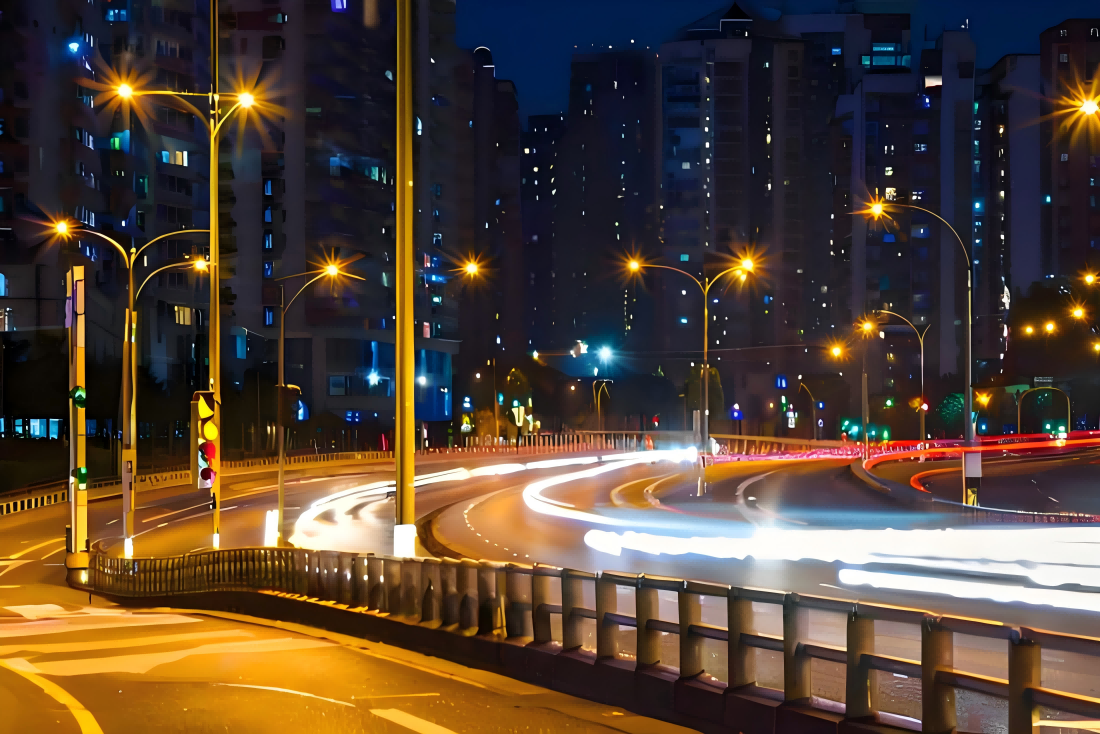Traditional streetlights have been a staple of urban infrastructure for decades, providing illumination and ensuring public safety. However, with the advent of smart technologies, the potential for enhancing street lighting systems has vastly expanded. This article explores the steps involved in the gradual transformation of traditional streetlights into smart lighting systems, highlighting the benefits and challenges along the way.
Replacement of Light Sources
The first step in upgrading traditional streetlights is the replacement of outdated light sources. Traditional streetlights often utilize high-energy-consuming and short-lived light sources, such as high-pressure sodium lamps. To improve energy efficiency and lighting performance, it is crucial to replace these with LED lighting. LED lighting technology offers significant advantages, including high efficiency, long lifespan, and environmental friendliness, making it the preferred choice for urban street lighting. This transition not only reduces energy consumption but also lowers maintenance costs and improves lighting quality.
Upgrading Control Systems
The next step involves upgrading the control systems of streetlights. Traditional control systems are often manual and lack the flexibility to adapt to changing conditions. To achieve smart lighting, it is necessary to introduce intelligent control technologies. These systems enable remote monitoring, fault alarms, data analysis, and on-demand lighting adjustments. By integrating sensors and communication technologies, streetlights can be controlled based on real-time conditions, such as traffic flow and pedestrian activity, resulting in more efficient energy use and improved public safety.
Integration of Sensors and Functional Modules
Smart streetlights are not just about illumination; they also serve as multifunctional urban infrastructure. To fully harness their potential, it is essential to integrate various sensors and functional modules. These may include air quality sensors, temperature and humidity sensors, noise sensors, and more. By collecting real-time environmental data and uploading it to the cloud, city managers can make informed decisions and take appropriate actions. Additionally, functional modules such as high-definition cameras, Wi-Fi hotspots, charging stations, and weather stations can be integrated into streetlights, optimizing the utilization of urban space and providing added value to citizens.

Data Sharing and Intelligent Management
The integration of sensors and functional modules paves the way for data sharing and intelligent management. Through the Internet of Things (IoT) technology, smart streetlights can communicate with other urban facilities, forming a "smart brain" for the city. City managers can leverage this data for intelligent decision-making and resource allocation, improving the efficiency and accuracy of urban management. For example, streetlights can adjust their brightness based on traffic and pedestrian flow, achieving on-demand lighting. In emergency situations, smart streetlights can quickly disseminate warning information, guiding citizens to take appropriate measures.
Gradual Promotion and Replacement
The transformation of traditional streetlights into smart lighting systems requires gradual promotion and replacement. It is advisable to start with pilot projects in specific areas or roads to validate the effectiveness and feasibility of smart streetlights. Based on the pilot results, the scope of promotion can be gradually expanded, ultimately achieving city-wide coverage. During the replacement process, existing infrastructure, such as streetlight poles, can be repurposed and upgraded to minimize waste and costs.
In conclusion, the gradual transformation of traditional streetlights into smart lighting systems is a necessary step towards the modernization and sustainability of cities. By replacing light sources, upgrading control systems, integrating sensors and functional modules, sharing data and achieving intelligent management, as well as promoting and replacing streetlights gradually, cities can significantly enhance their lighting infrastructure, improve energy efficiency, and contribute to the overall smart development of urban environments. This transformation not only benefits city managers but also enhances the quality of life for citizens, making cities safer, more efficient, and more livable.


 Energy Efficiency: How Remote-Controlled Street Lights Reduce Power Consumption
Energy Efficiency: How Remote-Controlled Street Lights Reduce Power Consumption
 Remote Control vs. Manual Control of Street Lights: A Comparative Advantage Analysis
Remote Control vs. Manual Control of Street Lights: A Comparative Advantage Analysis
 Lower Maintenance Costs with Smart Street Light Monitoring
Lower Maintenance Costs with Smart Street Light Monitoring
 Enhanced Public Safety Through Intelligent Street Lighting
Enhanced Public Safety Through Intelligent Street Lighting